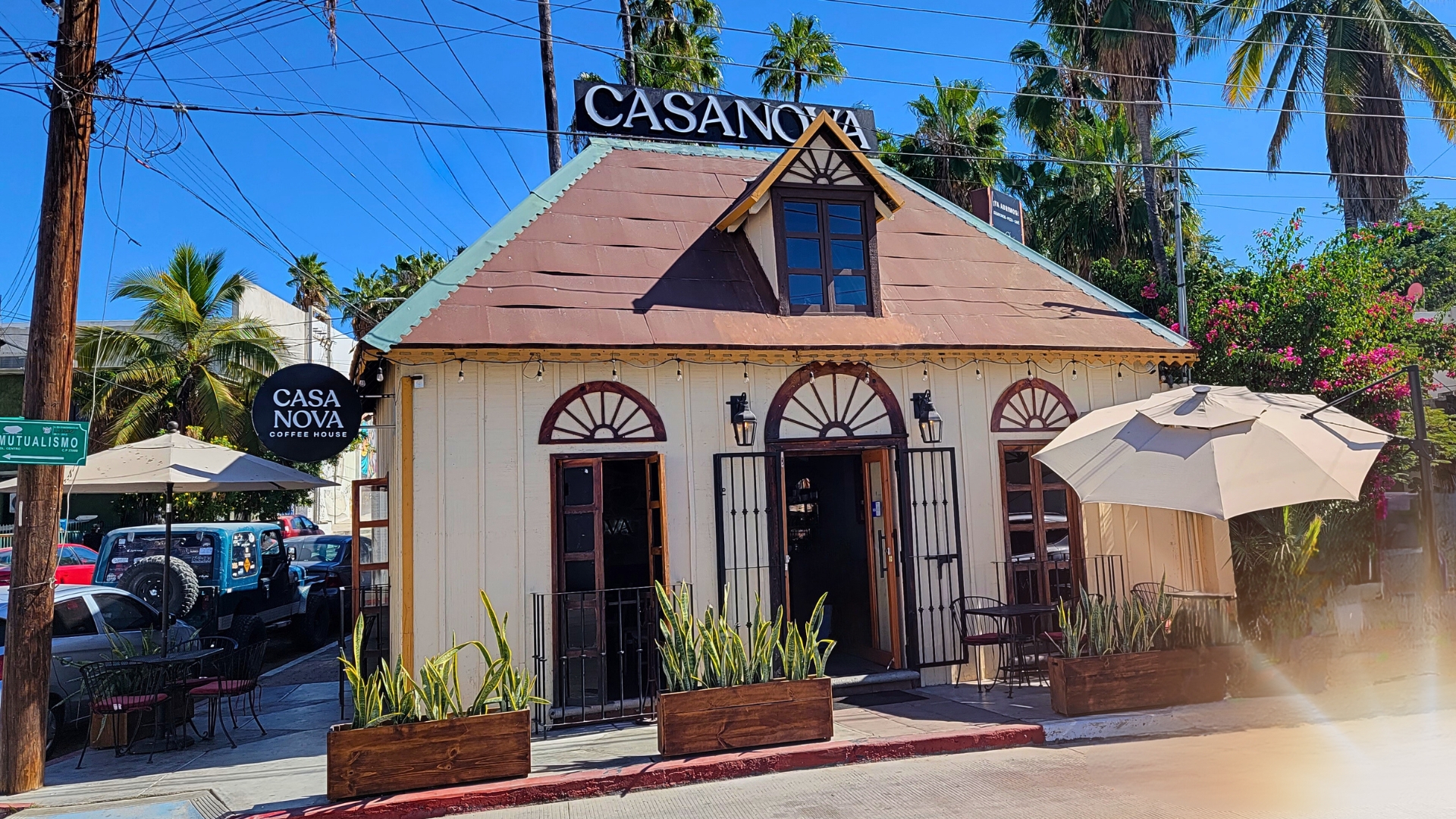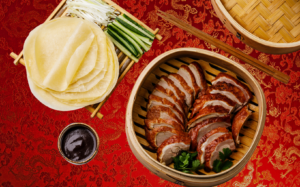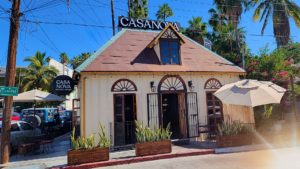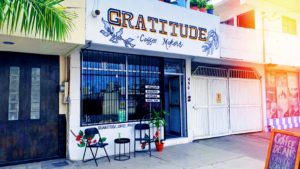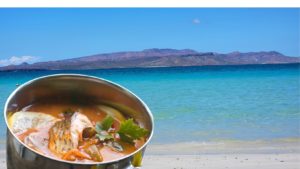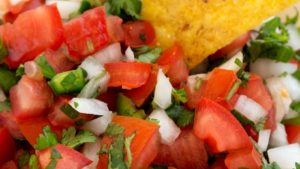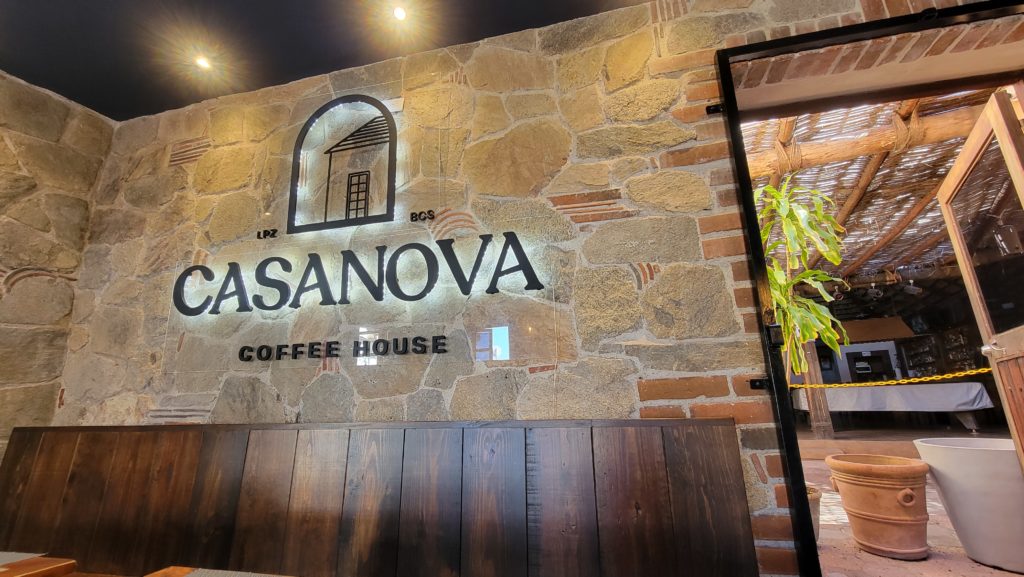
Another Magic Meeting
So there we were, standing in the very eye of Hurricane Sergio, knee-deep in new knowledge while the grandmaster of Gratitude rained fresh bolts of caffeinated facts onto our heads from his cosmic bag of roasted thunderbeans. It was an epic afternoon. (If you have no idea what the macchiato-hell I’m talking about, we recommend you first enjoy our last post, Beans of Light, to infuse this reading with a little added richness and complexity. Go ahead, we’ll be here when you get back.)
At one point during our interview with the owner and head roaster of Gratitude Coffee Makers, he broke out a portable Delter press, brewed up some of his favourite beans — while of course geekifying on temperature control and fusion points — and then poured out three little cups for us to sample. One for Vee, one for me, and one for a young man seated behind us who had quietly entered the coffee shop just a few minutes earlier. We had figured him for a client at first, but his keen interest in everything going on, as well as this invitation to join us in the dégustation, suggested there was perhaps something else afoot.
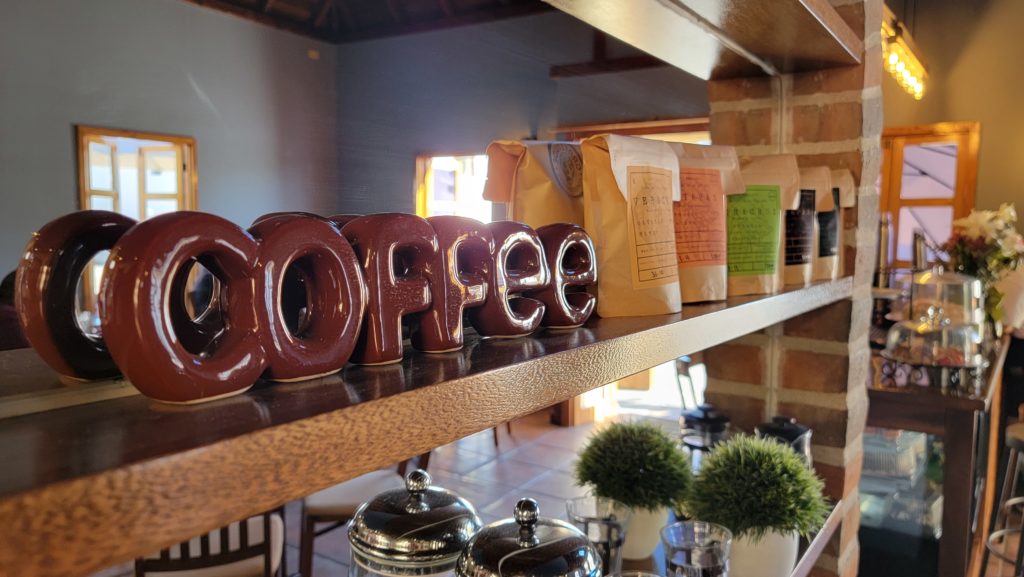
The three of us kick back together, sniffysipping away at Sergio’s sweet Sarchimor while striking up a conversation and exchanging impressions (nutty notes, cocoa, maybe even a smidgen of cannabis…) Fernando is our new acquaintance’s name, it turns out, and he tells us that it’s his day off and he just wanted to drop in on his friend, mentor and the man who makes his coffee shop’s special house blend. “Oh, are you a barista?” we ask. He is, he tells us, at a nearby café that he owns and runs. “Wait, what? How old are you?”
When I said young man, I meant young man. He tells us he’s twenty.
So, when I was twenty, my chief preoccupations were things like John Frusciante’s first solo album and hitchhiking my way to the sands of Tofino for some frolicking fun in the psilocybin sun. The very last thing on my mind was starting my own business, let alone running it successfully. It should be noted that as I write this, there’s a good chance that Fernando is now 21. Ok fine. So when I was 21, my interests included drinking ale like a mountain troll and creating hard-listening soundscapes on handheld microcassette recorders for pure sonic shits and giggles. Again, no business.
Already very impressed, we ask Fernando which café he owns in town. Casanova, he tells us, a block from the Malecón. “Wait, you own that place?!”
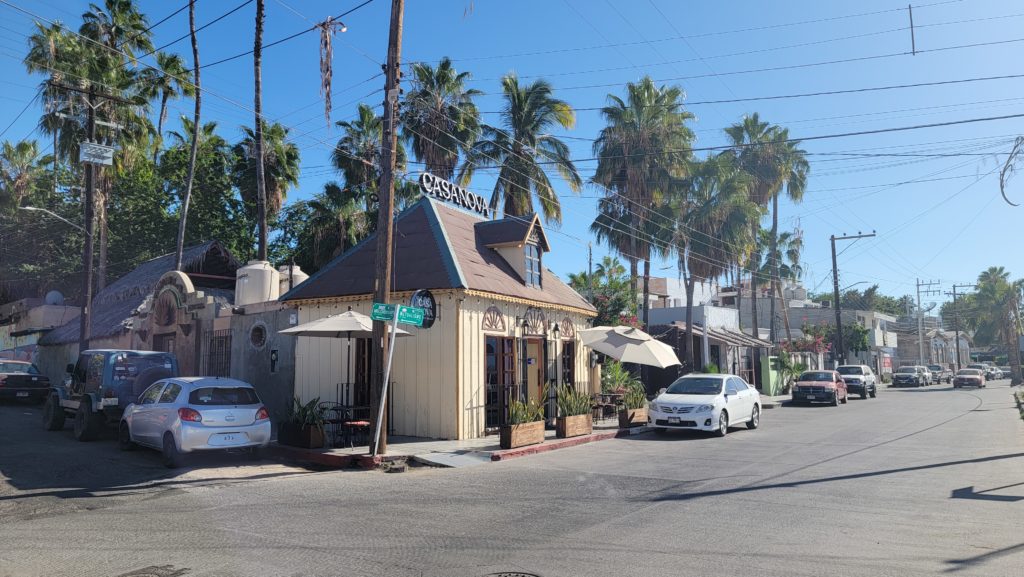
There Is A House…
Walking along Mutualismo street in the Zona Central of La Paz one sunny afternoon two months earlier, Vee and I were halted in our tracks by a singular building that pretty much tractor-beamed us toward it with its unignorably heavy charm. To our delight, it turns out it was a coffee house, and the house itself was unlike any other in the area. Standing alone beneath a twinkling grove of soft-swaying palms, it looked like it had been there long before its neighbours, giving off some easy-on-the-eye rustic village vibes that had us thinking of a couple of cafés we had visited in Estonia years ago. We wanted in. There was just one problem: Closed on Mondays. It was a Monday.
We had made a mental note of the place, but somehow just never ended up going (and it was always a maldito Monday whenever we happened to pass by). It was just sad. And now here we were, our second-to-last day in La Paz, chatting with the soft-spoken, unassuming young entrepreneur behind it all, whose passion, knowledge and total sweetness were increasingly winning us over as we spoke. Vee and I once again silently agreed: here’s a guy who knows his shit, and we wanted to find out more. Perhaps we could make a last-minute visit before leaving town to continue our chat and do a little brain-picking of the barista kind? The immediate invitation from Fernando came as cordially as it did enthusiastically.
Casanova, here we come.

Splendigs
There really is nothing like a great café. The coziness, the toastiness, the grinding beans and turning pages, kindled brains and meeting minds. At the centre of it all: the froth-taming, crema-weaving coffee smiths who do justice to those splendid Italian names up on the board one perfect cup at a time. There’s something that crackles in the air of a proper coffee house, something that enwraps, enlivens, feels ripe with potential and smells wicked good. These are places where ideas spark, dreams take form, plans get made and the conversation flows – places that just seem to bring out the better in us. And Casanova Coffee House is most definitely such a one.
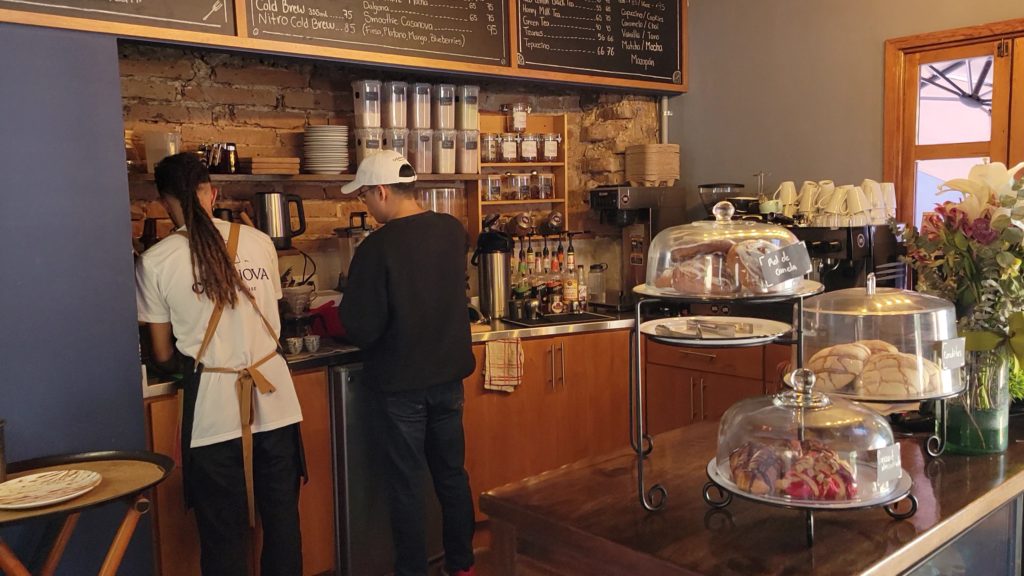
In terms of aesthetics, what’s promised on the outside here is more than delivered within.
The place is one big snuggle for the eyes: deep wood tones, brick and stone, kissed about by the sea breeze and sunbeams coming in through cottage windows and open doors. With its comfortable, spacious seating, country-style coffee nook and bar, once-upon-a-loft cathedral ceiling in dark timber, not to mention some clutch feng shui flowing right on through, everything here conspires to make you just not want to leave. It was clear to us as soon as we walked in that the tractor beam doesn’t end at the front door, and we weren’t going anywhere. Fernando later tells us that the overall feel he was going for was that of a “cozy house”. Mission fully accomplished, dear sir.
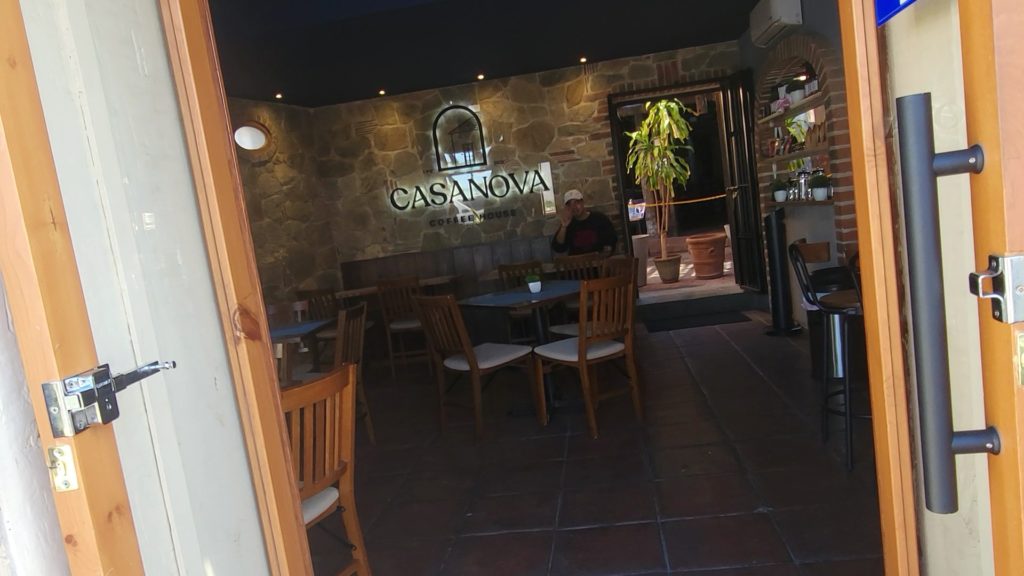
Full Of Beans
Pretty much immediately upon arrival, Vee and I just know that this is a good idea. We exchange warm greetings with Fernando and go straight into coffee talk as if our conversation from the day before had never ended. We haven’t even sat down and we’re already discussing comparative bean acidity, the beauty of the honey process, the different local roasters he works with (Gratitude obviously included), as well as the surprisingly enjoyable barnyard aromas that heavily fermented coffee can emit. We teach Fernando a new French term: “cul de vache” – cow’s ass. He giggles knowingly. This is gonna be fun.
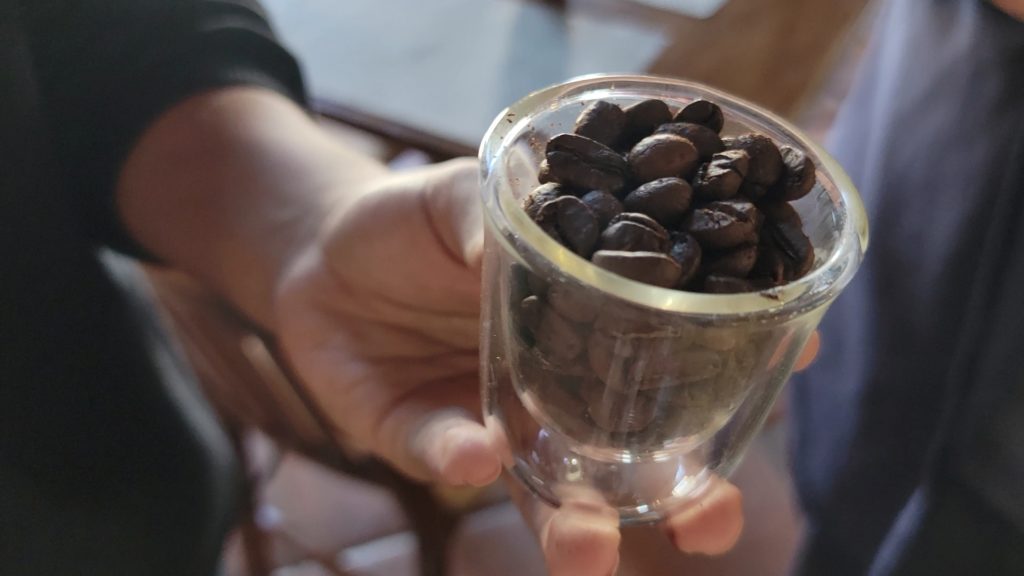
Before we know it, we have coffee in hand, me sipping away at a fantastic espresso brewed with their house blend – courtesy of Gratitude – and Vee falling steamily in love with a dirty chai latte made with Fernando’s own experimental spice mix (“dirty” since it’s made with coffee instead of tea, not for any other reason… Shame on you). Meanwhile, our host is giving us a tour of his wares and breaking out a variety of beans for us to sniff with the infectious enthusiasm of a prodigy guitarist showing us his collection of Gibsons and Fenders.
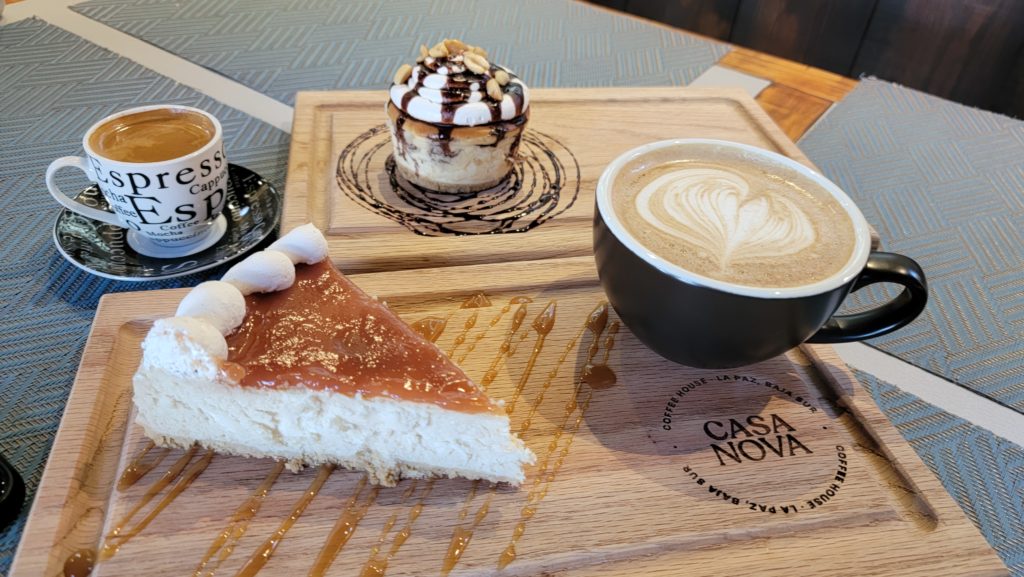
As we finally sit down to a beautiful little spread of sweet things he sneakily conjured up – including a guava cheesecake that has Vee now mildly freaking out – Luis Fernando Mendoza Escobedo begins telling us his story, taking us all the way back to when he was 16. As in, like, 5 years ago. Give or take.
Casanova, Take 1

“I’ve always been a barista at Casanova,” Fernando says with a laugh. Some blessed people find what they love to do very early on, and let’s just say that this young man took the espresso lane. He began his work life as a barista at another Casanova, his family’s previous coffee shop he ended up running with his mother, and he was hooked right away. Although there wasn’t really a demand for specialty coffee and skilled baristas in La Paz at the time, this was a direction Fernando was itching to explore as far as it would take him. Like Sergio, he followed that feeling with copious research, reading whatever coffee-related materials he could get his hands on and taking courses while working his skills. It certainly paid off, because he now regularly gets asked if he gives courses of his own, something he would love to do, but this new Casanova is a baby that requires the all of him until further notice.
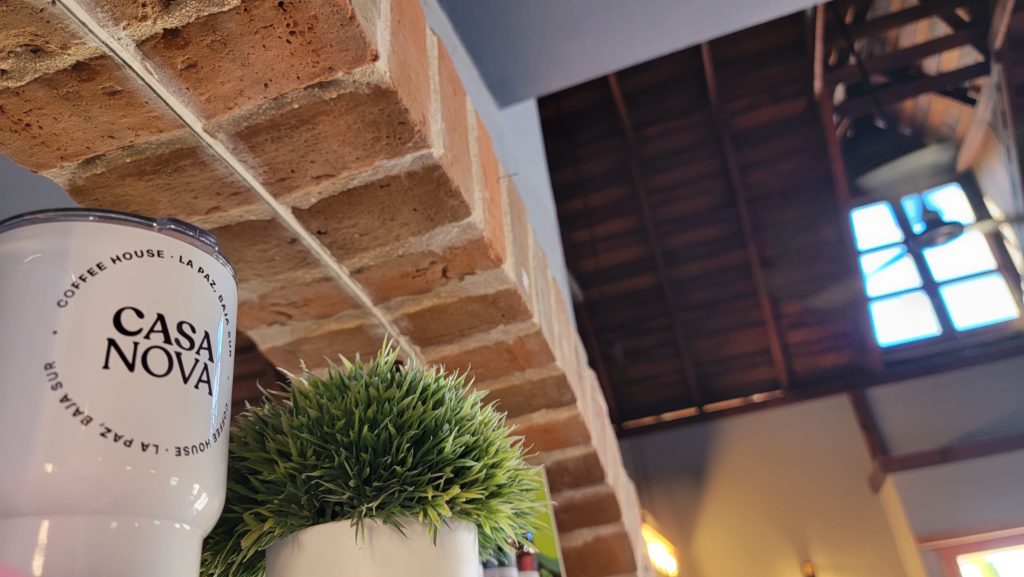
Although Casanova 1 was a thriving coffee shop with a mutually beneficial relationship with a nearby hotel, Fernando and his mother ended up having to close its doors due to a very sudden eviction that came about through no fault of their own. To make matters worse, his mother fell gravely ill at the time and had to be hospitalized for a few months, and Fernando found himself needing to take things real seriously, real fast. Such a situation would have sent most people his age along a decidedly different path, but the entrepreneurial barista wunderkind in him wasn’t about to change course. With his mother’s blessing and full confidence, as well as the help of a network of friends and allies, Fernando set forth to build a whole new Casanova in a whole new place on the other side of town. And I mean build.
Total Rehaul
Admiring everything around us, we ask Fernando what his main challenges were in making it all happen. You mean aside from the fact that the building was ancient and decrepit and required a complete rewiring and renovation of the interior, leaving nothing but the floors, the stone walls and a brick arch? Piece of guava cheesecake. That includes absolutely everything we see made of wood, he humbly adds. “So you’re telling me that wasn’t there?” I ask, pointing to the gorgeous, rustic cathedral ceiling in all of its bygone-attic chic. Nope. And here I was thinking they had just spruced it up to its previous storied glory. Turns out the glory is just a few months old.
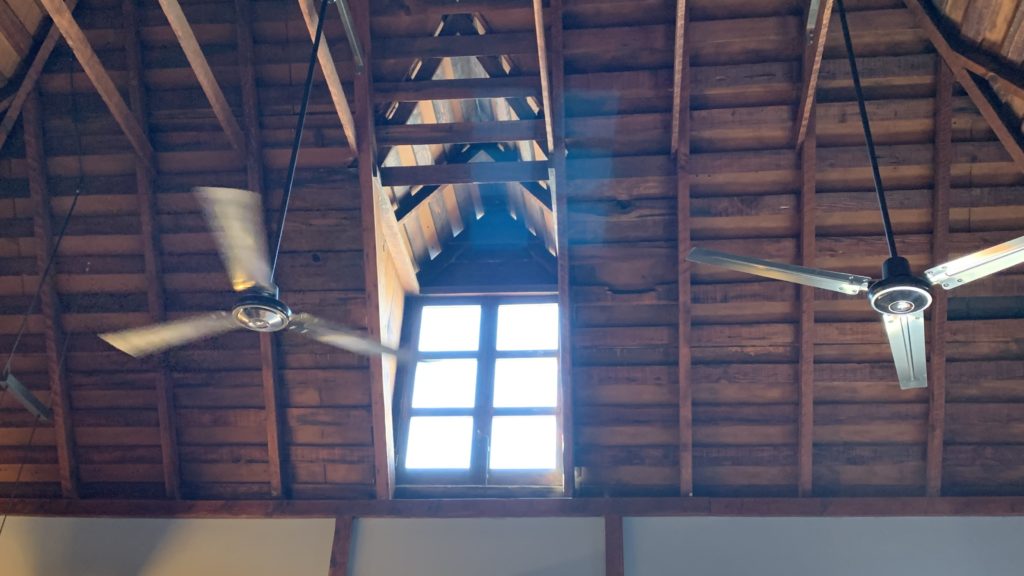
Speaking of wood, one of the few remnants of what once was is a wood-burning pizza oven (the place was previously a pizzeria), a serious bonus that Fernando was not about to let go to waste. I tell him that where we’re from, those things can only be grandfathered in, which is exceedingly rare, so if you got one, definitely jump on it. Although Mexico is far more liberal on the charcoal/wood-smoke front, this was serendipitous nonetheless, and Casanova proudly – and wisely – offers a selection of wood-fired pizzas on its menu. Next time we go, we’re definitely trying the Hawaiian, not to mention their mouthwatering breakfast and brunch offerings, and as many more desserts, pastries – basically anything baked – that we can possibly get our hands on. All of it freshly made in-house, for the delectable record.
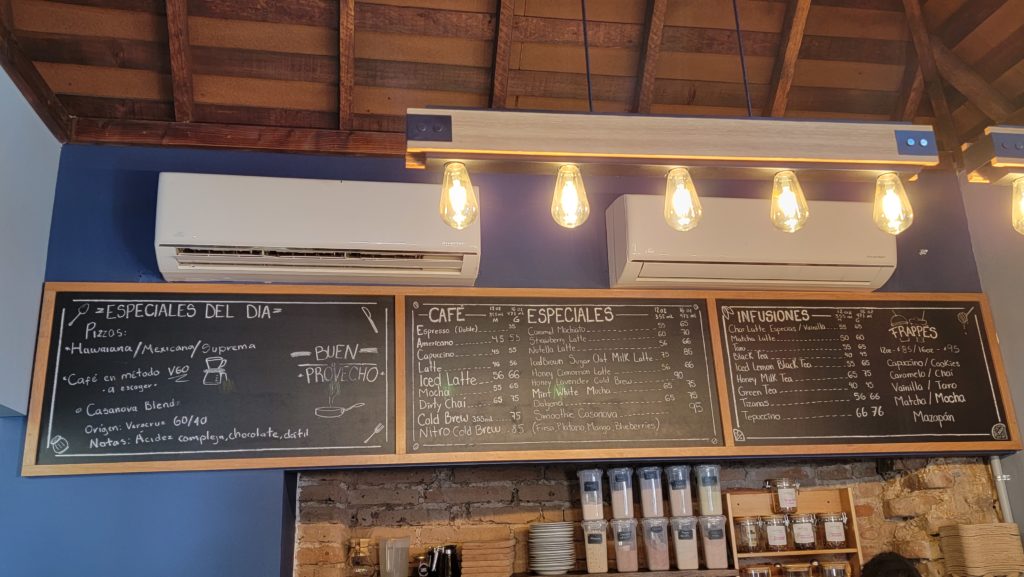
Fernando tells us that his mother, who is now thankfully back in good health, allowed him complete creative freedom in everything from look to layout to logo. So yeah, it’s all him. Love that logo by the way, a clear-cut meta image of a corner of the building itself that reminds us of where we are while celebrating it at the same time. Looking around, Vee and I find ourselves bursting with pride and we hardly even know the young man. We can just imagine how his mother feels.
V60, In Bloom
The time eventually comes, and we knew that it would, when Fernando goes full-throttle science on our asses. He grabs some freshly ground micro-lot Huatusco coffee from Finca Corahe in Veracruz (prepared by beloved local roasters, Docecuarenta), a natural and honey-processed, anaerobically fermented mélange of Caturra and Garnica varietals grown at 1400 meters above sea level. He places a glass coffee pot fitted with a plastic grooved drip cone onto a Hario scale and then scoops 20 grams of ground beans into a pre-soaked paper filter (pre-soaked to remove any potential paper taste.) Picking up a gooseneck kettle in which he has prepared 300 grams of precisely heated water, he carefully begins to pour.
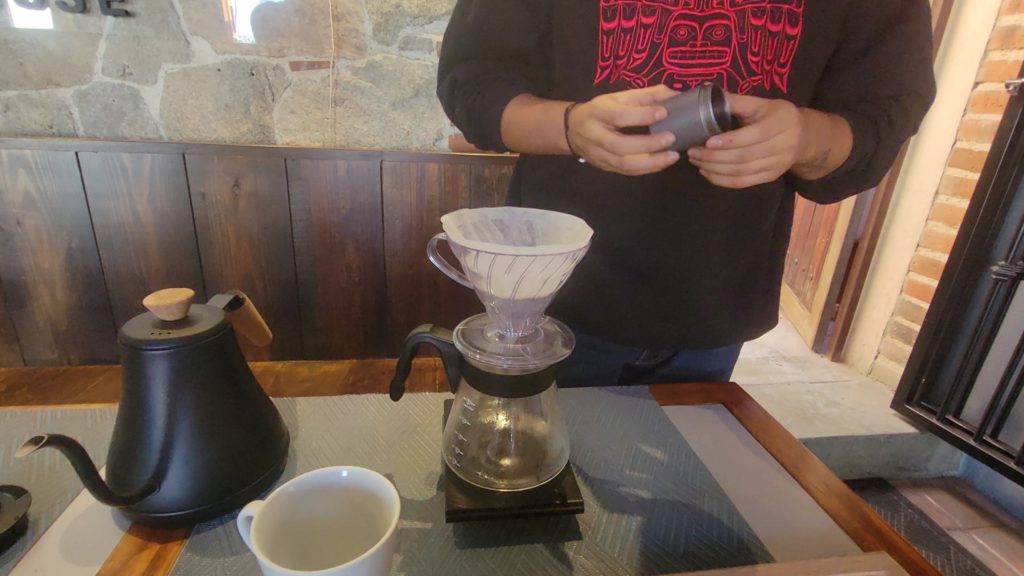
This is the V60 method, he tells us, while spiralling the water in with some totally Taichi fluidity and intent. It’s a hallowed technique in the realm of taking your coffee dead seriously, one that yields a super-clean cup where the subtlest tasting notes come racing up to the fore and smack you right in the flavour bone. He explains that the grooves in the filter – inclined at 60 degrees – create pasillos, little corridors that allow for more oxygen flow and optimize extraction. His first pour is exactly 45 grams of water, just enough to initiate that lovely little thing known as the bloom.
A Bloomin’ Sidebar
For those unfamiliar, blooming is basically pre-wetting your ground beans with hot water and letting them sit for a moment before continuing with your extraction, a step that any pour-over aficionado is most unlikely to skip. It’s kind of like stretching the coffee before working it out, opening it up so that its flavour potential is given every possible opportunity to flex and shine. As with any food that browns under high temperatures, roasted coffee is jam-packed with all kinds of deliciousness thanks to the sugar-and-protein shuffle ‘n shake known as the Maillard reaction. One offshoot of this, however, is a buildup of CO2 in the beans, which interferes with the brewing water getting in and grabbing all the yummers that it should. Wetting the beans beforehand essentially degasses them, something you can actually see as the water giggles and foams when it hits the coffee. Once the party settles down, your water won’t be fighting the farty fight against escaping CO2, and extraction can go ahead, unfettered and unflatulent.

Cuppa Calculation
As Fernando pours away once the blooming is done, he introduces us to the vital importance of coffee-to-water ratios, the most common being 1g of coffee to 15g of water, hence the 20:300 ratio at hand. Like so much in the highly experimental barista borderlands, such rules can be bent, but they are nevertheless quite golden should you ever lose your way. Once upon a time, Fernando was having trouble getting the flavours he was after from a batch of Jiribilla beans (a renowned Mexico City-based roastery he also proudly showcases), so he called up Sergio. The very first things the master wanted to know: “How are your ratios?” and “What about your bloom?” A little adjustment later, problem solved.
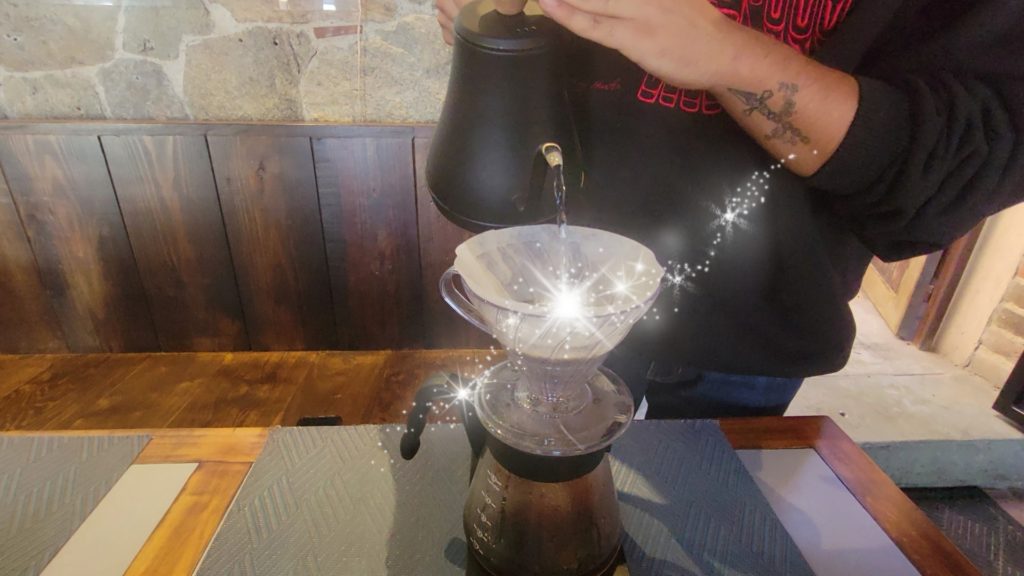
For Fernando, “coffee is experimentation”, and he finds very obvious joy in constantly calibrating, constantly looking for those optimal levels he’s after. He’s a true technician and coffee is his medium, Casanova his workshop. One of his plans, he tells us, is to accrue a sweet collection of different types of brewing gear and just try stuff out, tinkering and tweaking away while sharing the unconventional and exciting results with his clients. This is how great things happen, and Fernando has innovator written all over him.
3rd Wave, 4th Wave, 5th Wave, Casanova Wave. Don’t be surprised.
Just before the coffee’s ready, Fernando fits in one last geek attack, messing with our already limited understanding of extraction. He explains to us that you can actually program the flavour profile of a brew containing two different roasts using two water temperatures in the same coffee bed. Specifically, you can combine a light and dark roast, both with their own infusion points, and then administer two separate pours at differing heats, the waters targeting each bean individually for a unified flavour experience. We’re still wrapping our heads around that one. The bloom, the ratios, the temperature and timing; as Vee says, it’s like turning one big radio dial and deciding which flavour station you want to tune into.

Zen & The Art Of Coffee Loving
The whole time our coffee is taking form before us, we find ourselves increasingly relaxed. There’s just something about Fernando’s all-around approach: something soft, meditative, incisive – a methodical and clarifying energy one would expect from a bona fide tea ceremony. When all is said and poured over, and the science has done its thing, together we sip. Vee begins excitedly listing off aromas and flavours she’s detecting, from cocoa, dark cherries and rose petals, to cedarwood and pine planks. Fernando lights up at all of this, completely absorbed and focused between sniffs. “I really like it,” he softly comments, a seemingly simple statement, no doubt containing worlds.
More Beans Of Light
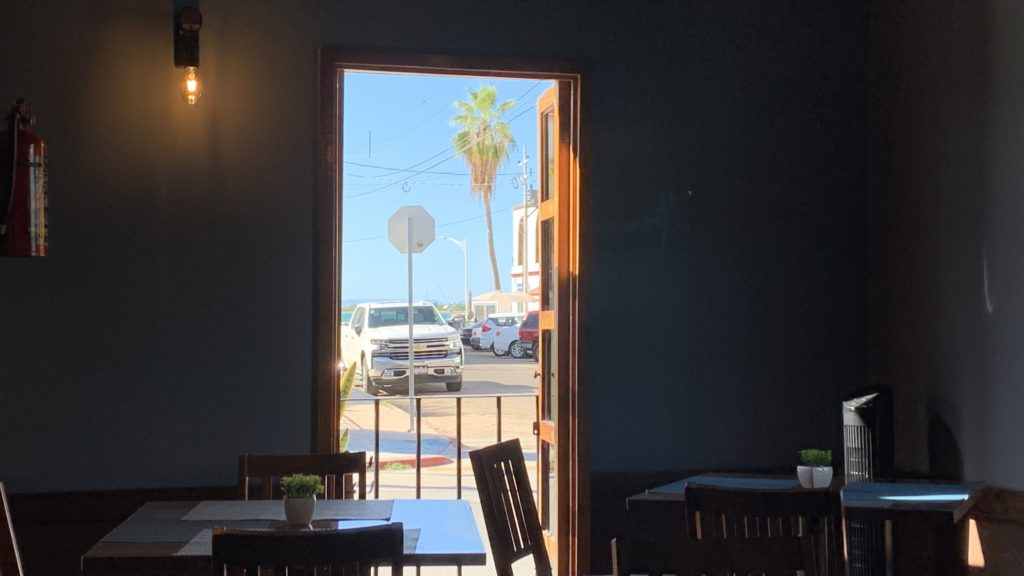
Mondays aren’t so bad, it turns out. If it weren’t for Mondays, we never would have met Fernando the day before, who had decided to spend his precious time “off” with his peers at Gratitude; he actually ended up lending them a hand to close up shop after we left. The passion – there’s really no better word for it – that we had witnessed over the past 24 hours coming out of these two mutually supportive operations has irrevocably marked us, and looking back, we get jolts of inspiration every time. These guys probably have no idea the effect they’ve had, so it bears repeating: lightworkers also work with beans, it would seem. And Fernando is yet another beaming example.
Sitting back and enjoying our host’s masterfully rendered cup, I’m reminded of something Sergio had said about the interconnectivity and teamwork involved in the Mexican producer/roaster/barista chain. The producer has the power to grow great coffee, and if they do that, the roaster can roast great coffee, and then it’s up to the barista to brew great coffee. Obvious enough, yet no so obviously realized.
Watching Fernando at work, at the end of that beautiful chain and in this new Casanova he has built, we hope that he’s as proud as we are, because he should be. From floor to ceiling to cheesecake to dirty latte, everything in this magical little coffee shop (and that includes the amazing staff by the way!) is a shining link that makes every other link in the chain shine in turn. And it all began with one teenager’s love for brewing a bean, all those years ago.
2018, was it?
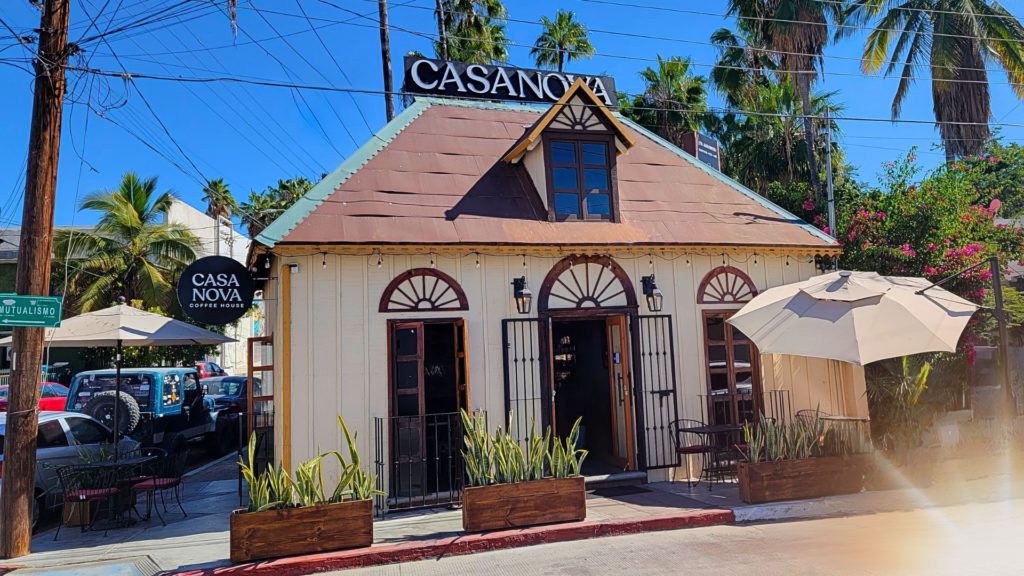
Location
Casanova Coffee House
Mutualismo 310, corner Melchor Ocampo, Zona Central, La Paz

Thank you so much for reading! Be sure to check out Casanova’s Facebook and Instagram pages to find out more about the great things that Fernando and his kickass team are up to. And if you’re ever in La Paz, be double-shot-Nutella-Latte sure (yup, on the menu) to drop by and pay these wonderful peeps a visit. If you find yourself staying for way longer than you originally intended, that’s very much Fernando’s doing; consider yourself warned.
¡Gracias a Fernando y a todo el equipo de Casanova por una visita realmente espléndida, y esperamos verles más pronto que tarde!

